Gas welding and cutting are not particularly hazardous, as long as you pay attention to safety details.
Hoses and regulators are designed to be used with specific gases, and manufacturers issue detailed recommendations on operating and maintaining these products safely.
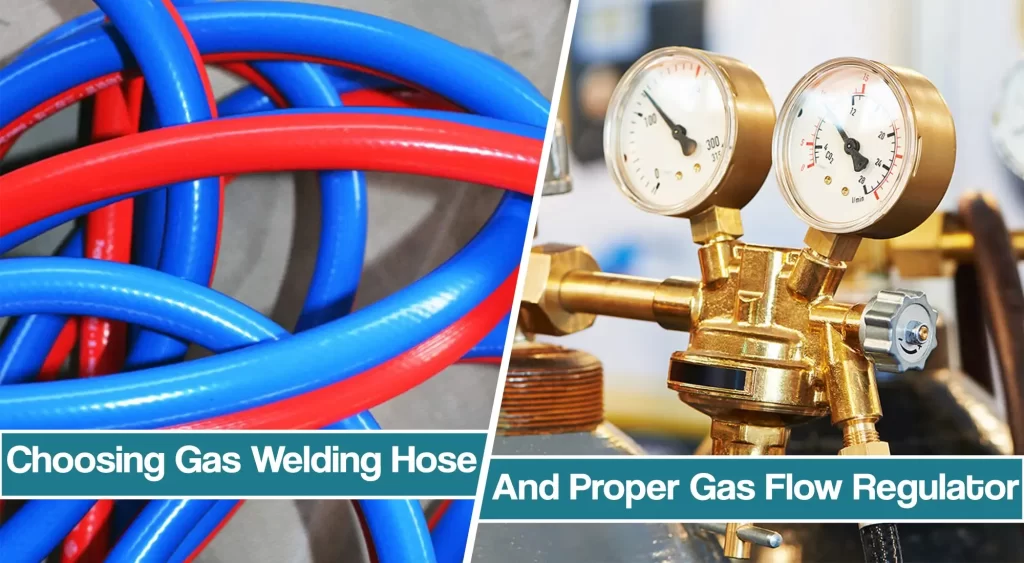
Carefully following these recommendations will keep operators safe and efficiency high. So follow this guide for choosing hose and regulator for gas welding.
Choosing Hose And Regulator For Gas Welding – Gas Hoses
Welding hoses are specifically designed for particular welding gases and pressures. To prevent mix-ups, hoses are usually color-coded: red for acetylene and other fuel gases, green for oxygen, and black for inert gases and compressed air. It’s paramount to select the right hose for any oxy-fuel welding or cutting operation.
Welding hoses consist of a tube and protective cover. The most commonly recognized welding hose standard in North America –RMA/CGA IP-7– defines three grades of welding hose and four types:
- Grade R for acetylene only. The tube and cover are not flame resistant and not oil resistant.
- Grade RM for acetylene only. The tube is not flame resistant and not oil resistant. The cover is flame and oil-resistant.
- Grade T for most fuel gases, including acetylene. The tube and cover are flame and oil-resistant.
- Type L is a single line for light-duty service.
- Type S is a single line for standard duty service.
- Type H is a single line for heavy-duty service.
- Type VD is a vulcanized double line (twinned).
Any fuel gas other than acetylene requires a Grade T hose to ensure compatibility with the gas being conveyed and user safety. Even if using acetylene, Grade T hose provides additional features and benefits such as:
Oil Resistance
Grade R hose may become soft and tacky when exposed to an oily environment.
This may lead to hose cover separation from the reinforcement or excessive wear of the cover. Both conditions may lead to premature hose failure and decreased service life.
Grade T hose protects from oil, both externally and internally. Grade RM hose provides only external oil protection, and Grade R offers neither external nor internal oil protection.
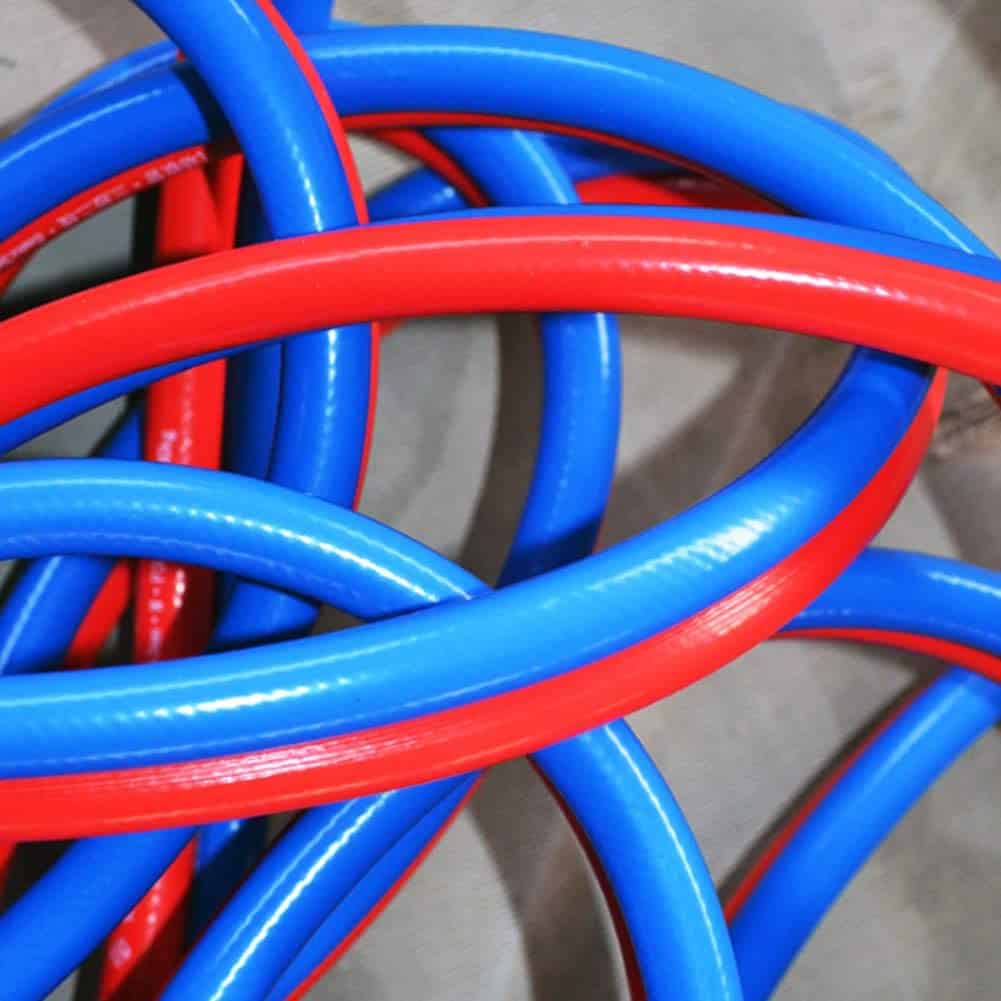
Flame Resistance
Grade T hose has a self-extinguishing tube and cover that provides external and internal protection against exposure to adverse conditions such as hot slag, flashbacks, or inadvertent flame exposure. The exterior of Grade RM provides only external flame protection, and Grade R offers neither internal nor external flame protection.
The lower cost of Grade R and RM hoses, as compared with Grade T hoses, makes them attractive to buyers
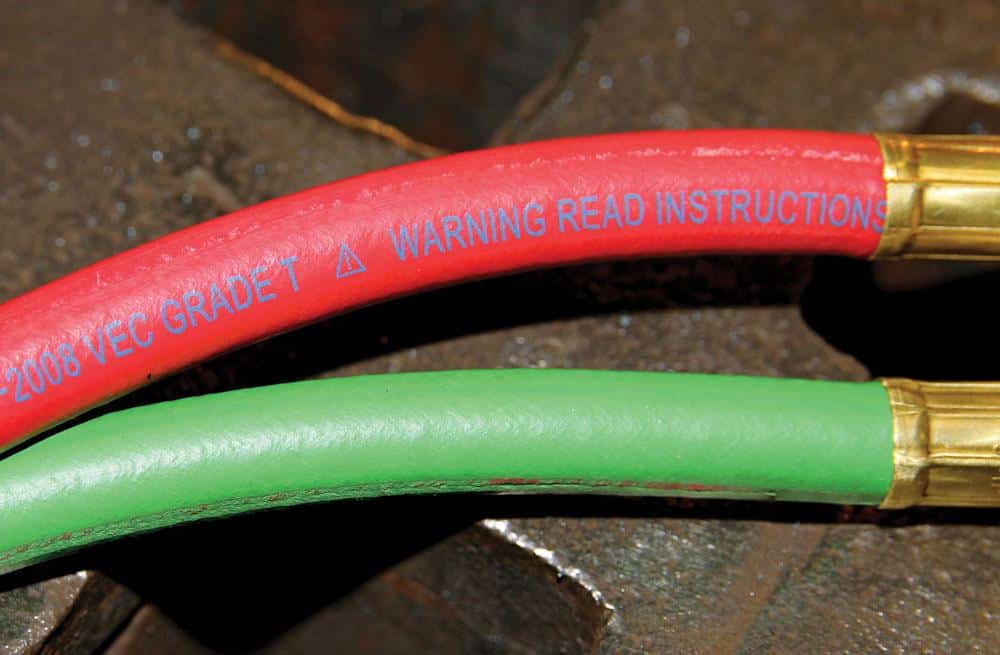
However, the differences between the grades, and the consequent potential for premature failure, create the possibility of choosing the wrong hose for an application.
Due to these safety concerns, CGA Safety Bulletin SB 11-4 (2004) recommends the exclusive use of Grade T welding hoses for all oxy-gas welding applications.
Some hose companies have introduced products that offer additional safety features, such as Grade T welding and scarfing hose, with a thick cover for added resistance to environments that could subject the hose to abrasion, cutting, and gouging.
As the industry migrates to non-acetylene gases for extreme welding and scarfing applications, Grade T hose is a must because of its compatibility with various fuel gases.
For additional safety, factory-supplied hose assemblies ensure maximum coupling retention and include fuel gas lines with notched, left-hand thread brass nuts.
Typically, fuel gas nuts (for all grades of welding hose) have red plating to minimize the chance of incorrect fitting installation and the crossing of hose lines at the tank or torch.
Compressed air hoses should never be used for oxygen. Oil or grease in these hoses present no hazard in ambient air but are flammable or even explosive in oxygen-only environments. Keep hoses away from sources of oil and grease in the workpiece to prevent deterioration and the chance of contact with oxygen.
How To Choose a Safe Gas Welding Regulator
Regulators reduce the high-pressure compressed gases supplied in cylinders to a lower pressure that the equipment can safely use.
Regulators do not measure or control flow unless equipped with a metering valve or flowmeter. Proper regulator selection and operation are critical for the safety and effectiveness of the system.
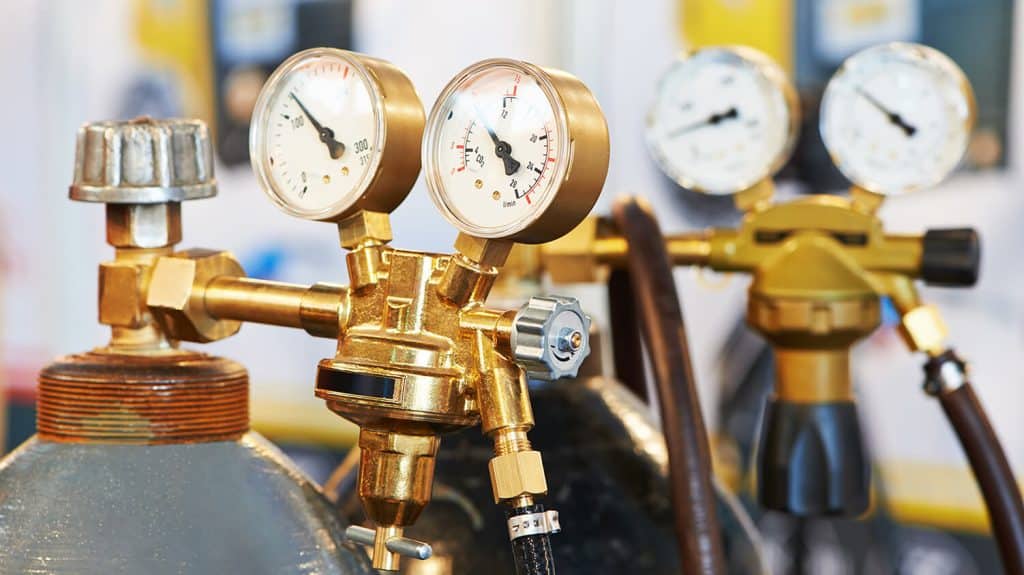
One of the primary factors affecting regulator selection is the compatibility of the system materials. Regulators are designed for use with specific gases within prescribed pressure ranges.
Because different gases have different densities, the spring inside the regulator is designed to provide the correct flow rate for a particular kind of gas.
Additionally, materials used in some regulators will react adversely with some gases such as acetylene or oxygen. Plaques or decals on the regulator indicate the gas for which the regulator is designed.
Cylinder valve outlets and inlet connections on regulators also are designed to minimize the chances of using the wrong regulator.
Examining The Regulator
Always examine the regulator before attaching it to a cylinder. The wrong regulator is being used if the connections do not fit together readily. Damaged threads on the connecting nut or valve outlet can make a regulator challenging to attach and likely leak.
Always use a cylinder wrench or other snug-fitting wrench to tighten the regulator nut and hose connections.
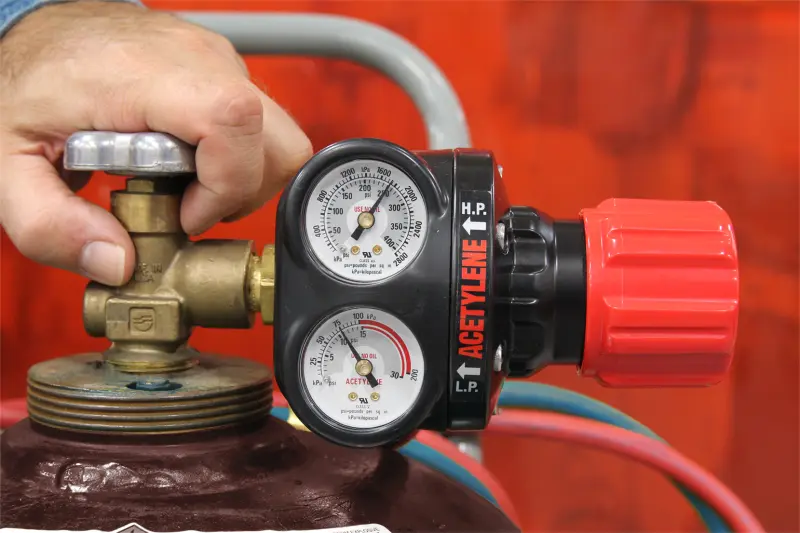
An oversized wrench, pliers, or pipe wrench may damage the fittings and make it impossible to tighten them properly. A connection problem caused by dirty or damaged threads will result in leaks when the cylinder is used.
Before attaching a gas regulator to any cylinder, except hydrogen or fuel-gas cylinder, always open the cylinder valve slightly and close it immediately (“crack” it).
Cracking removes any dirt lodged in the valve outlet and prevents dirt from entering the regulator. Please do not stand in front of the valve outlet while cracking it, and do not point the outlet at anyone.
For hydrogen and fuel-gas cylinder valves, merely wipe out the outlet connections with a clean, dry, lint-free cloth.
Stand to the side of the regulator when opening the cylinder valve. Cylinder regulators have a relief device to prevent excessive pressure from developing.
High-pressure cylinder gauges have solid-front, safety-back construction. When subjected to excessively high pressure, the light-metal safety back will blow off to relieve the pressure. Even if the gauge glass breaks, the burst of venting gas can be startling.
On rare occasions, old or improperly maintained oxygen regulators will ignite. But even a new oxygen regulator can burst into flame if the cylinder valve is suddenly turned on full.
The quick burst of high-pressure gas from the cylinder into the regulator recompresses the oxygen inside it and heats it to several thousand degrees Fahrenheit. Oxygen cylinders with regulators attached should always be opened slowly.
Gas Welding Hoses Hazard Prevention Tips
Part of an ongoing maintenance and inspection program should include an awareness of some common misapplications of welding hose assemblies. Gas welding training should also include safety measures and hazard prevention in the workplace.
- Never hang a torch from the hose. This creates excessive stress on the hose/coupling interface and may lead to cover separation and blistering, tube damage and leaking, or some other type of damage.
- Do not route hoses, either while in service or during nonuse, in such a manner as to bend the hose severely at the hose/coupling interface. This kinking may lead to cover separation and blistering, tube damage and leaking, or some other type of damage.
- Do not repair or splice damaged or failed hoses. Repaired hose assemblies are unreliable because they may not be able to take the stress of the coupling/repair process. This makes the repaired area more susceptible to failure. Damaged or failed hoses should be replaced with a new hose assembly.
- Do not pull or drag welding equipment with a tethered hose assembly. This creates excessive stress on the hose/coupling interface and may cause or lead to the separation of the components. Internal damage may not be readily apparent.
- Never drag or rest hoses on weld points not fully cooled, or drag them across potential puncture or abrading points.






